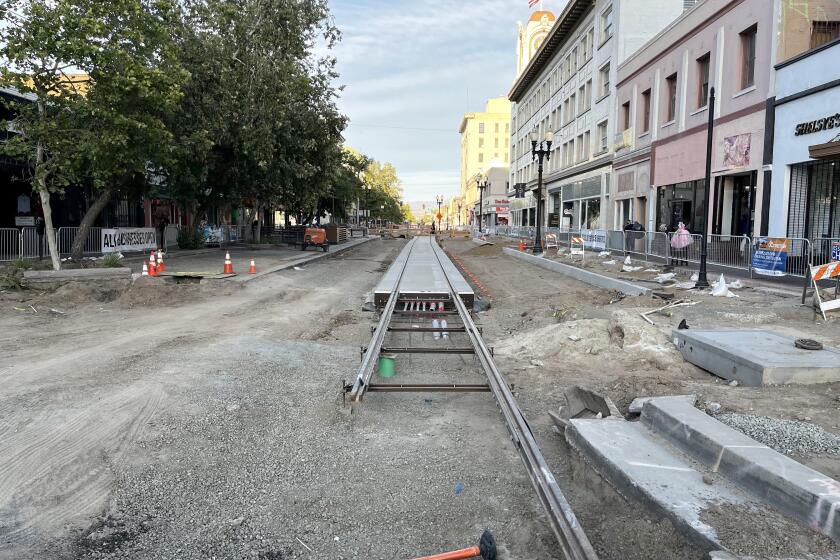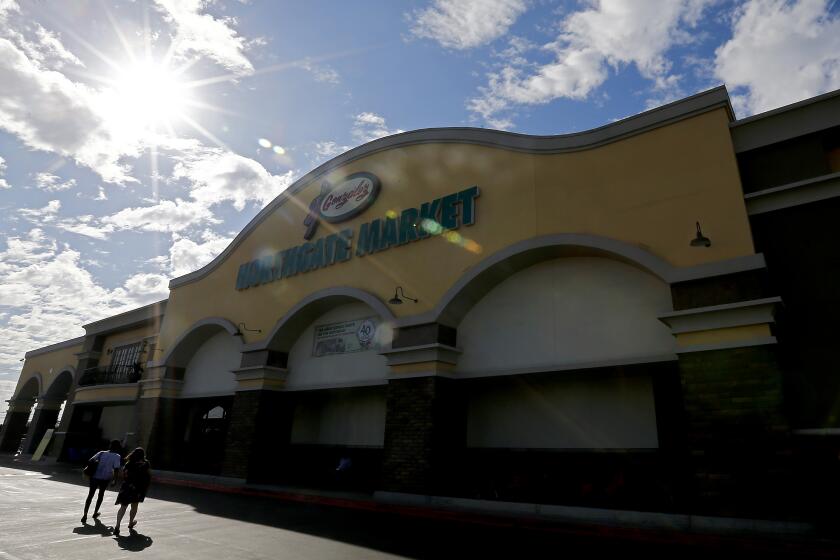A streetcar is coming to downtown Santa Ana. Will it fast track gentrification?
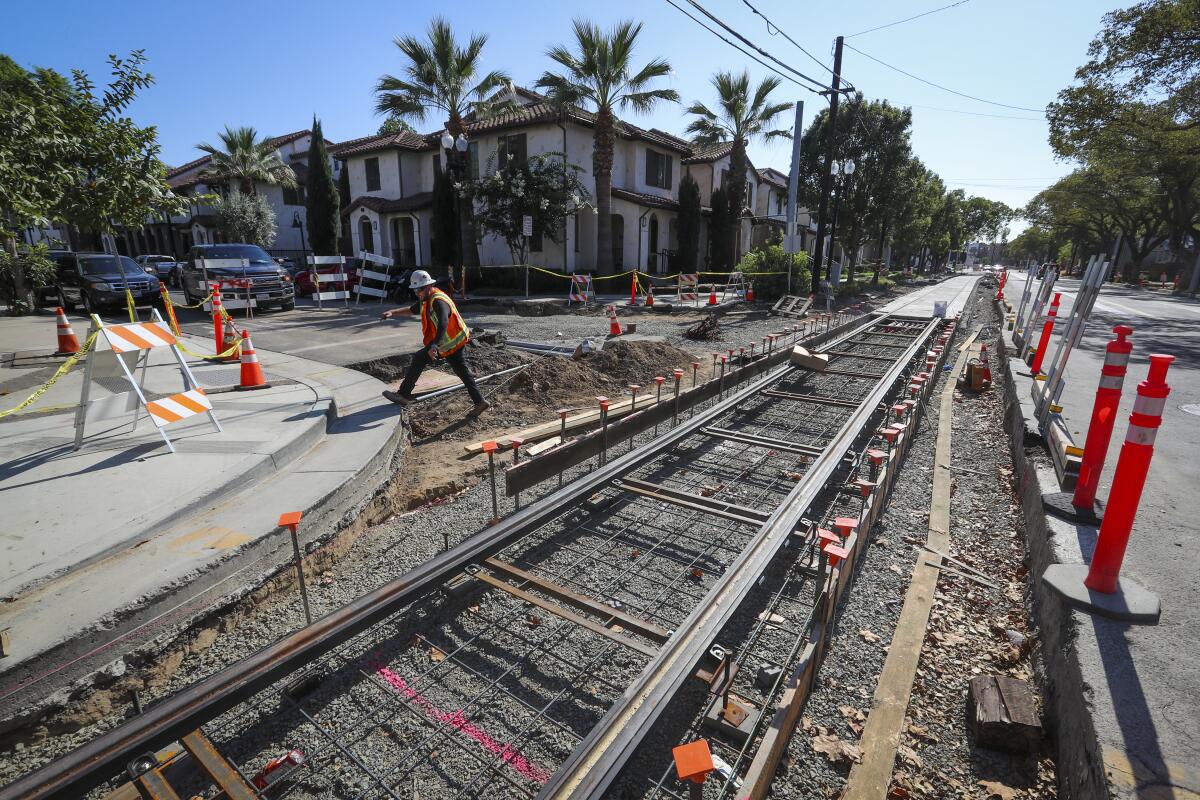
- Share via
Behind Yohana Rojas’ apartment near downtown Santa Ana, workers are pounding away on a new streetcar line.
Nearby, a 218-unit complex is going up on 4th Street, promising a “new riff on downtown living” for rents likely above $3,000 a month.
Rojas’ family gets by on what her husband earns as a painter. With two children to feed, the couple can’t afford more than the $1,800 they pay for the two-bedroom unit.
Even before the streetcar was approved, many longtime neighbors had already left, Rojas said, unable to keep up with rising rents. She worries that prices will continue to increase and more people will be driven out.
“The streetcar is going to bring improvements,” said Rojas, 40, who has lived in the neighborhood since arriving from Mexico in 2007. “But what’s going to happen when it’s running in 2024? The first thing that’s going to go up is our rents, and we’re going to have to leave. What good are those improvements for us then?”
The electric-powered streetcar, which will run about four miles from Santa Ana to Garden Grove, may be a boon to some businesses on a 4th Street strip that is starting to cater to hip, high-end customers.
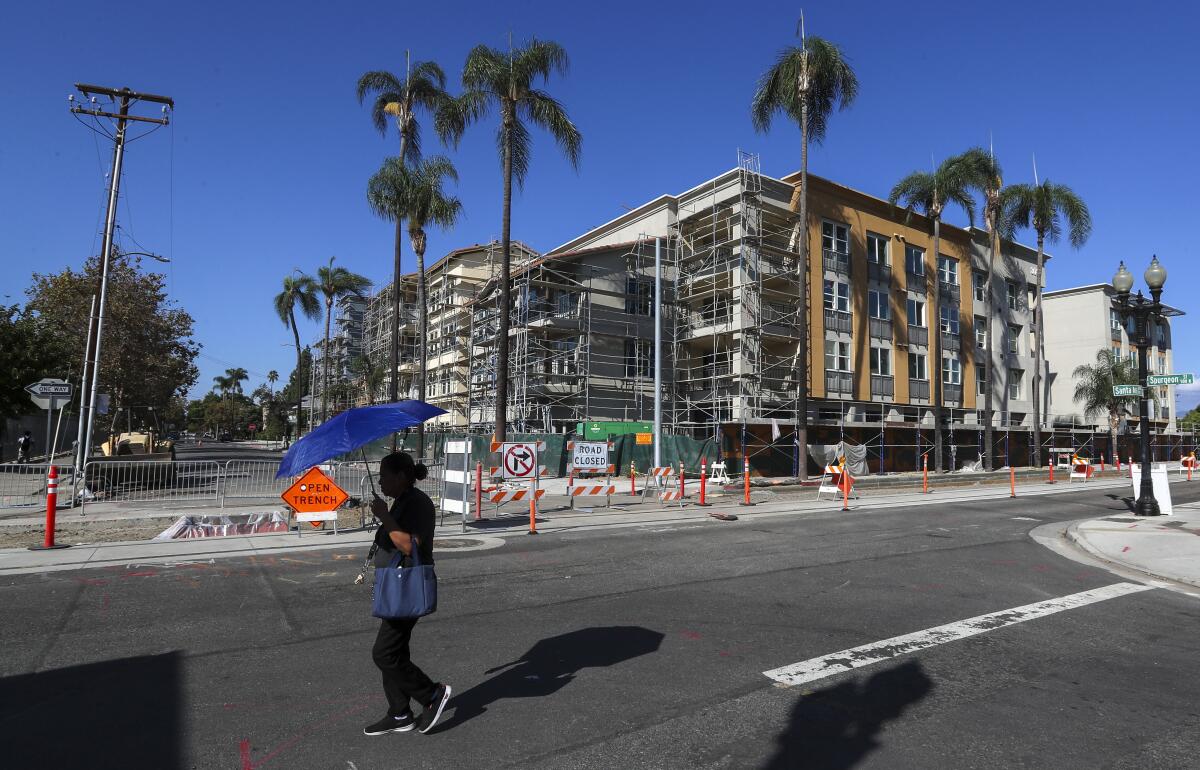
Homeowners in the downtown area, with its tightly packed bungalows and historic charm, also stand to benefit if property values go up.
But some Santa Ana residents fear the streetcar will accelerate changes already underway, forcing longtime Latino-owned businesses out as trendy restaurants and bars sprout up around quinceañera shops.
In the Lacy neighborhood where Rojas lives, many endure overcrowded conditions and pool their paychecks to make ends meet.
Any increase in prices is an existential threat to renters — and, possibly, a threat to Santa Ana’s identity if longtime residents leave the working-class, majority-Latino city and are replaced by a wealthier, whiter population.
The $1.2 million in economic assistance comes from federal American Rescue Plan Act funding and will disperse up to $20,000 for businesses impacted by OC Streetcar construction.
“Santa Ana is just a hot city now,” said Maria Ceja, a community advocate and urban planner. “People are leaving suburbia and they’re wanting to come back to cities, but people are saying there isn’t enough housing to accommodate everyone that wants to live in the city. People are being priced out to attract newer populations deemed to have more money.”
In car-dominated Orange County, many urban planners see the streetcar as a milestone, despite its relatively short length — a first move toward a future that incorporates public transit and density.
The Orange County Transportation Authority took over the $509-million project in 2014 after a more ambitious light rail line connecting Fullerton to Irvine was defeated by residents.
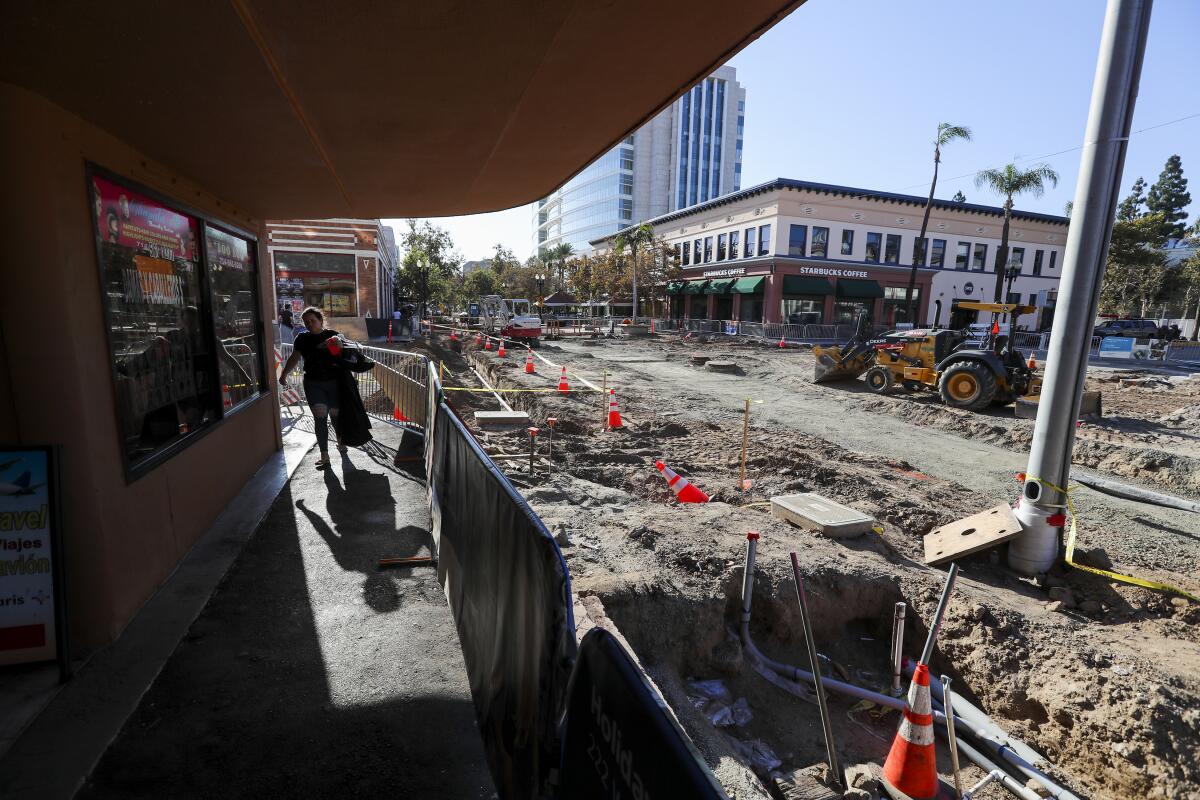
In Santa Ana that year, more than 100 downtown business owners signed a letter opposing the proposed streetcar. Some residents voiced fears of being displaced.
Michele Martinez, then a City Council member, was initially skeptical of the streetcar but cast the swing vote in 2014 endorsing its route through Santa Ana.
Martinez felt that more public transportation was needed in a city where 55% of residents don’t have access to a car. She hoped that the council majority could combine the project with affordable housing.
“Because we controlled land use and zoning, this would have given Santa Ana a true legacy by connecting its civic center to downtown while ensuring that our residents who live adjacent to them would be able to remain,” said Martinez, who now sits on the California Transportation Commission and is a consultant for an affordable housing proposal on the streetcar line.
Martinez termed out of the City Council in 2018. A new pro-development council majority, led by then-Mayor Miguel Pulido, approved the 218-unit luxury apartments on 4th Street, called Rafferty. They also approved a boutique hotel and apartment complex on what is now a public parking garage.
Just after Pulido left office in 2020, the council approved a plan to replace a grocery store on 4th Street with luxury housing.
Pulido, who was mayor for more than 25 years, sees the streetcar as the first segment of a light rail system that will one day connect Santa Ana to John Wayne Airport, Disneyland and Los Angeles.
Last month, the Santa Ana City Council approved a plan to demolish a Northgate Market and erect luxury apartments in its place. It was one of the first controversial decisions by the new council, which added three members and a new mayor in November.
“People from all income levels are going to benefit from that,” Pulido said. “We’re pretty segregated in many ways. I hope the streetcar becomes a big melting pot that brings people together and brings prosperity and a stronger economy to all.”
Council members did not respond to requests for comment.
Late last year, they passed a rent control measure — the first of its kind in Orange County — that capped annual increases at 3% for housing that was built before 1995 or is owned by a company.
Erualdo González spent many of his youthful days on La Cuatro, as 4th Street is known in the Latino community, at the shoe store his mother managed.
He recalls a festive corridor where speakers outside record stores blared ranchera music from legends like Vicente Fernández and paleteros sold ice pops from pushcarts.
Now, as a Cal State Fullerton Chicano Studies professor, González researches the changes he’s seen downtown since its heyday in the 1980s.
Development tied to public transportation often follows after other signs of gentrification, like artists communities and work-live lofts, which in Santa Ana had appeared long before the streetcar, he said.
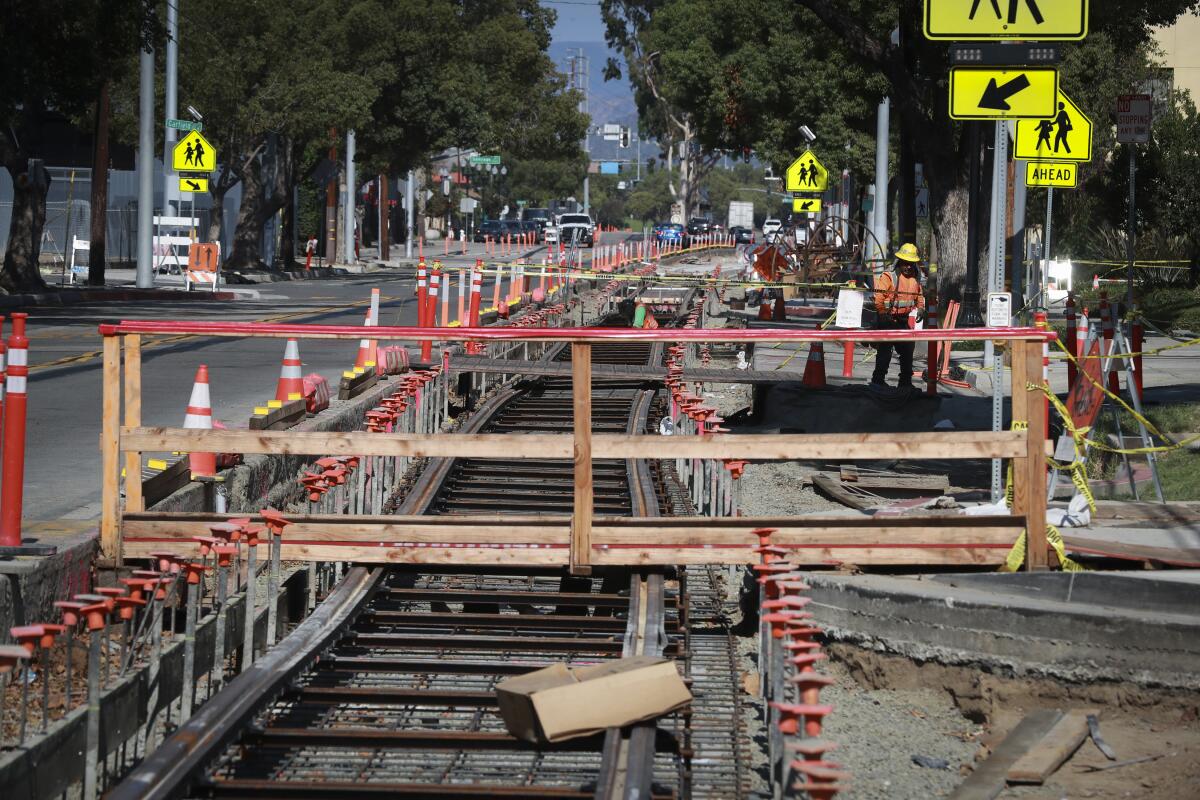
Sometimes, he said, city officials deliberately try to attract wealthier residents and rebrand an area’s image.
“The trolley is just one aspect to achieve this bigger vision of having a more middle-class community,” González said. “It’s city officials who want to be at the forefront saying, ‘I created a change. I brought more people with deeper pockets into the area. It’s not filled with poverty or immigrants.’”
For Rafferty’s developers, the streetcar is a major asset to market to tenants.
The completed rail line will connect to Metrolink and Amtrak, and it will also enliven downtown Santa Ana with visitors, said Charles Elliott, president of Toll Brothers Apartment Living, the company behind the project.
A survey of Santa Ana residents by UC Irvine researchers in 2019 found that fewer than half believed the streetcar would have a positive impact on their neighborhoods. The closer they lived to the route, the more likely they believed it would make things worse.
But some homeowners expect the streetcar to invigorate downtown Santa Ana, ease traffic and parking problems and increase property values.
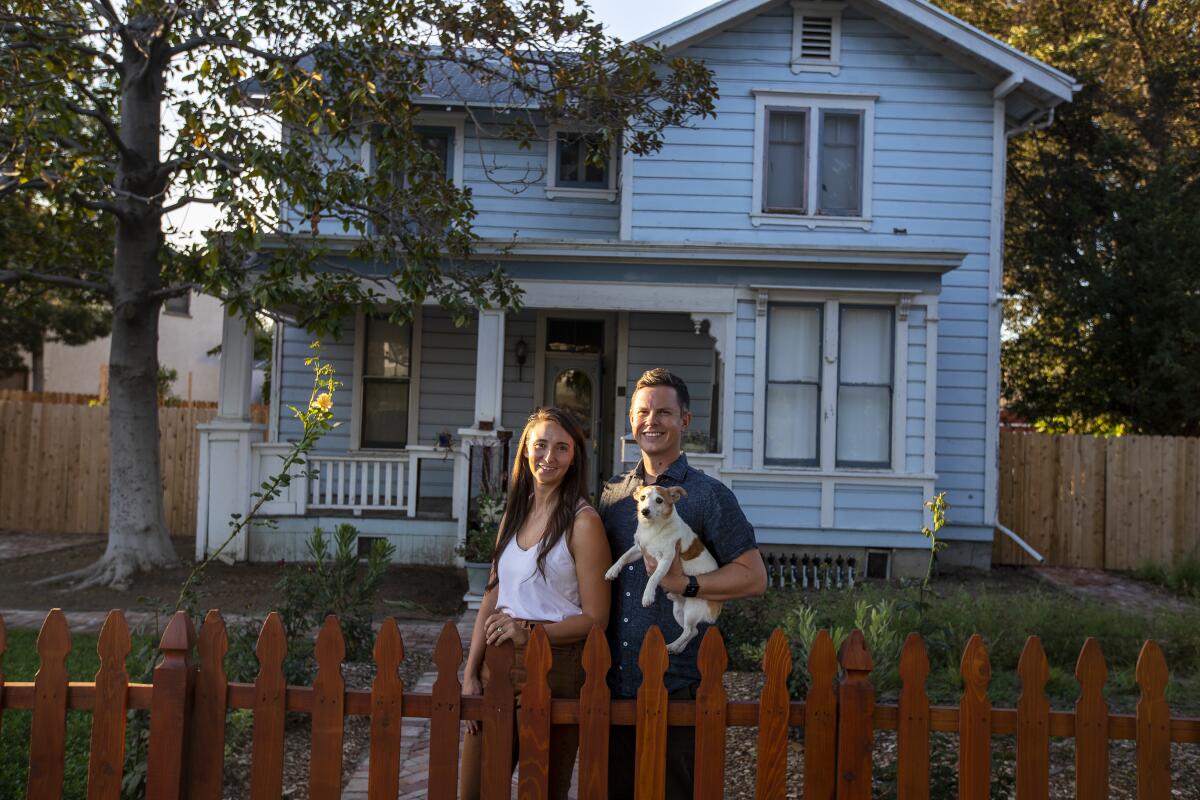
Duane Rohrbacher recently moved into a two-story Craftsman house built in 1887 in French Park, one of the city’s oldest neighborhoods, where lush trees shade Victorian, English Tudor, Colonial Revival and Craftsman-style homes.
Rohrbacher, 35, is the acting president of the neighborhood association and executive director of development at UC Irvine’s School of Education.
“Having more moderate and higher income housing will bring a different dynamic in terms of having restaurants, shops and retail that Santa Ana hasn’t historically had,” said Rohrbacher, who lives with his wife, Shannon Quihuiz, and dog Max. “The downtown being nicer means the neighborhood closest to it is nicer by default.”
French Park has some protection against redevelopment because it is on the federal registry of historic places.
The average home price is $677,000, up nearly 30% from a year ago, according to Zillow. A Craftsman duplex built in 1890 is listed at $850,000.
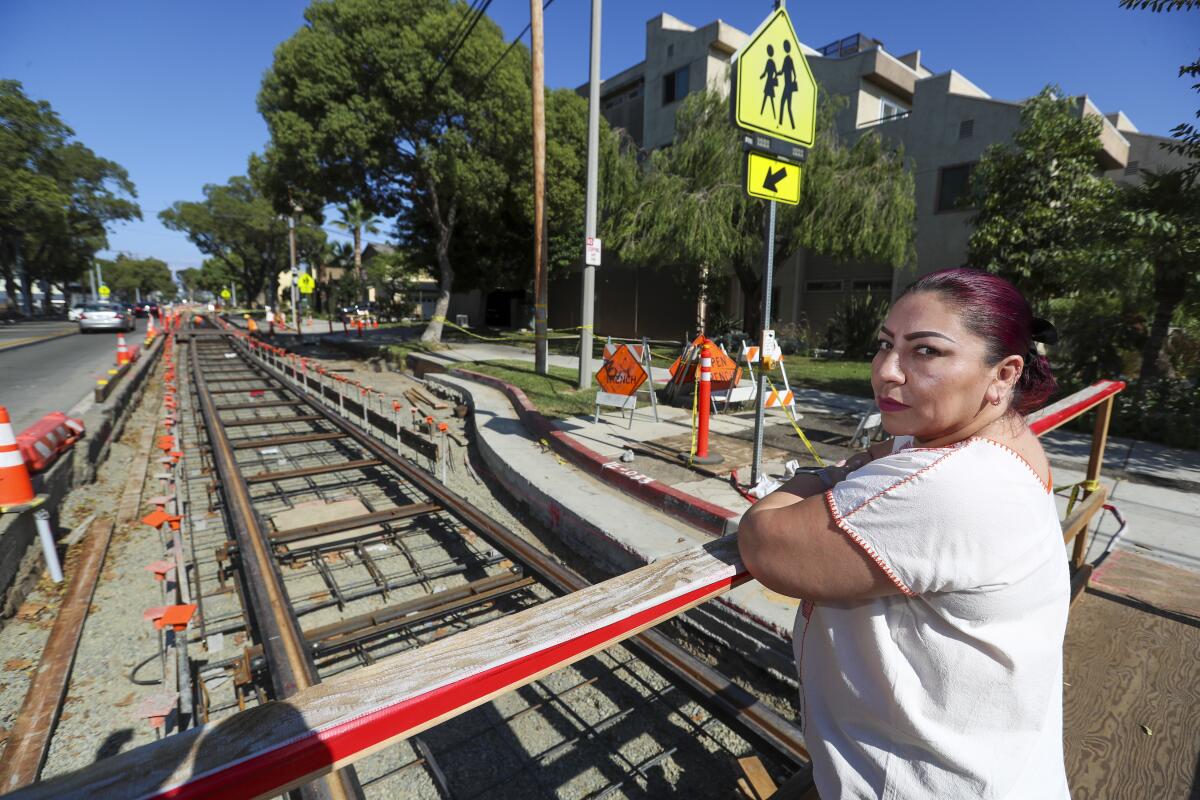
On the other side of the future streetcar track, Idalia Rios pays $1,750 a month for the two-bedroom apartment she has called home for the past 11 years. Rent control kept the increase at 3% this year — much lower than previous $200 hikes.
Rios, 43, is a consultant for a nonprofit, Santa Ana Building Healthy Communities. She’s also a volunteer with Vecindario Lacy en Acción, a grassroots group focused on housing issues.
Eleven apartments, or 5% of Rafferty’s total units, will be set aside for “very low” income tenants. Legacy Square, another new development along the streetcar route, will bring 93 units, all at affordable rates, to the Lacy neighborhood next year.
Rios encourages residents to attend workshops on how to apply when the time comes.
But the supply of affordable housing is not nearly enough for Lacy’s mostly Latino, working-class residents to be included in a changing downtown, Rios said.
Market rates for the new apartments will be a pipe dream for most, and rent increases on existing ones could price them out of the neighborhood.
“When we speak of a luxury housing and of rents higher than $3,000,” she said, “it’s out of reach for us.”
More to Read
Sign up for Essential California
The most important California stories and recommendations in your inbox every morning.
You may occasionally receive promotional content from the Los Angeles Times.
